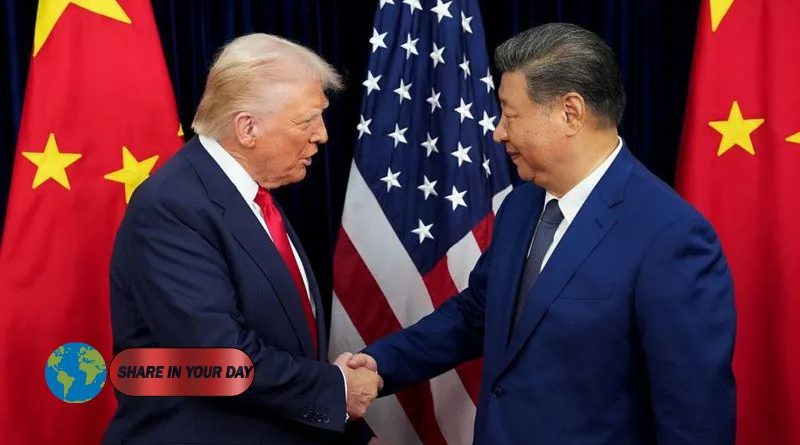China to Ease Automotive Chip Export Ban in Major Trade Deal with US
In a significant breakthrough, the United States and China have reached a new trade agreement, which will see China ease its export restrictions on critical automotive computer chips. The chips, essential for vehicle production worldwide, have been at the center of a growing supply chain crisis in the global automotive industry. According to the White House, the move is part of a broader agreement between the two nations, designed to address a variety of economic and trade issues.
The deal was confirmed in a fact sheet released by the White House following a high-level meeting between President Xi Jinping and former President Donald Trump in South Korea. The two leaders discussed key areas of economic cooperation, including rare earth minerals, soybean exports, and measures to combat the illicit trade of fentanyl.

A Step Towards De-Escalation
The deal represents a significant step toward de-escalating the trade tensions that have plagued US-China relations in recent years. These tensions reached a peak earlier this year when the Trump administration imposed tariffs on Chinese goods, which were met with retaliatory measures from Beijing. The new agreement, however, appears to mark a shift toward cooperation, at least on several major fronts.
One of the most critical issues addressed in the agreement is the resumption of chip exports. In recent months, the global automotive industry has struggled with a severe shortage of semiconductors, which has been exacerbated by China’s export restrictions on these vital components. One company at the center of this issue is Nexperia, a Dutch-based semiconductor manufacturer that produces a large portion of its chips in China. These chips are crucial for various car manufacturers, including major European automakers.
The White House confirmed that China has agreed to “take appropriate measures” to ensure the resumption of trade from Nexperia’s facilities in China, allowing the continued production of legacy chips. The Chinese government is also expected to create a list of companies eligible for chip exports, although the full scope of this measure remains unclear.
Sigrid De Vries, the director general of the European Automobile Manufacturers’ Association, welcomed the announcement but cautioned that the situation remains fluid. “While the easing of restrictions is positive news, supply shortages are still a concern, and it’s hard to predict how this will affect car prices,” De Vries said.
Rare Earth Minerals and Fentanyl: Key Trade Areas
In addition to automotive chips, the US-China trade deal also touches on the export of rare earth minerals, which are essential in the production of electric vehicles, military equipment, and consumer electronics. China has agreed to pause its recent export controls on these critical materials for one year, providing some relief to US manufacturers. The White House hailed this move as a step toward stabilizing the global supply chain for these essential materials.
The trade agreement also addresses the ongoing issue of fentanyl, a synthetic opioid responsible for a large number of overdose deaths in the United States. The US has long pressed China to do more to curb the production and export of fentanyl and its precursor chemicals, which are primarily sourced from China. As part of the new deal, China has pledged to take significant measures to combat fentanyl production and trafficking, while the US has agreed to lower tariffs on Chinese goods related to fentanyl imports.
Soybean Exports: A Win for US Farmers
Another major component of the trade deal involves US agricultural exports. China has committed to purchasing a significant quantity of US soybeans over the next few years, with a promise to buy 12 million metric tonnes in the last two months of 2025, and 25 million metric tonnes annually for the following three years. This agreement will provide a much-needed boost to American farmers, who were hit hard earlier this year when China halted soybean imports from the US in response to the trade war.
In response to this, President Trump revived a bailout program for farmers, which had been used during his first term to offset the economic impact of the trade conflict.
What’s Next?
While the trade deal offers hope for a de-escalation in tensions between the US and China, questions remain about the long-term impact of these agreements. For the automotive industry, the easing of chip export restrictions could help mitigate the current crisis, but the ongoing uncertainty around supply chains and production schedules may take months to resolve.
The commitment on rare earth minerals and fentanyl could further stabilize key industries in both nations. However, experts warn that trade relations between the two largest economies in the world are still fraught with challenges, and much of the deal’s success will depend on how both countries implement and adhere to the agreed terms.
As the global economy continues to recover from the effects of the pandemic, the trade relationship between the US and China will likely remain a pivotal factor in shaping international business dynamics.




